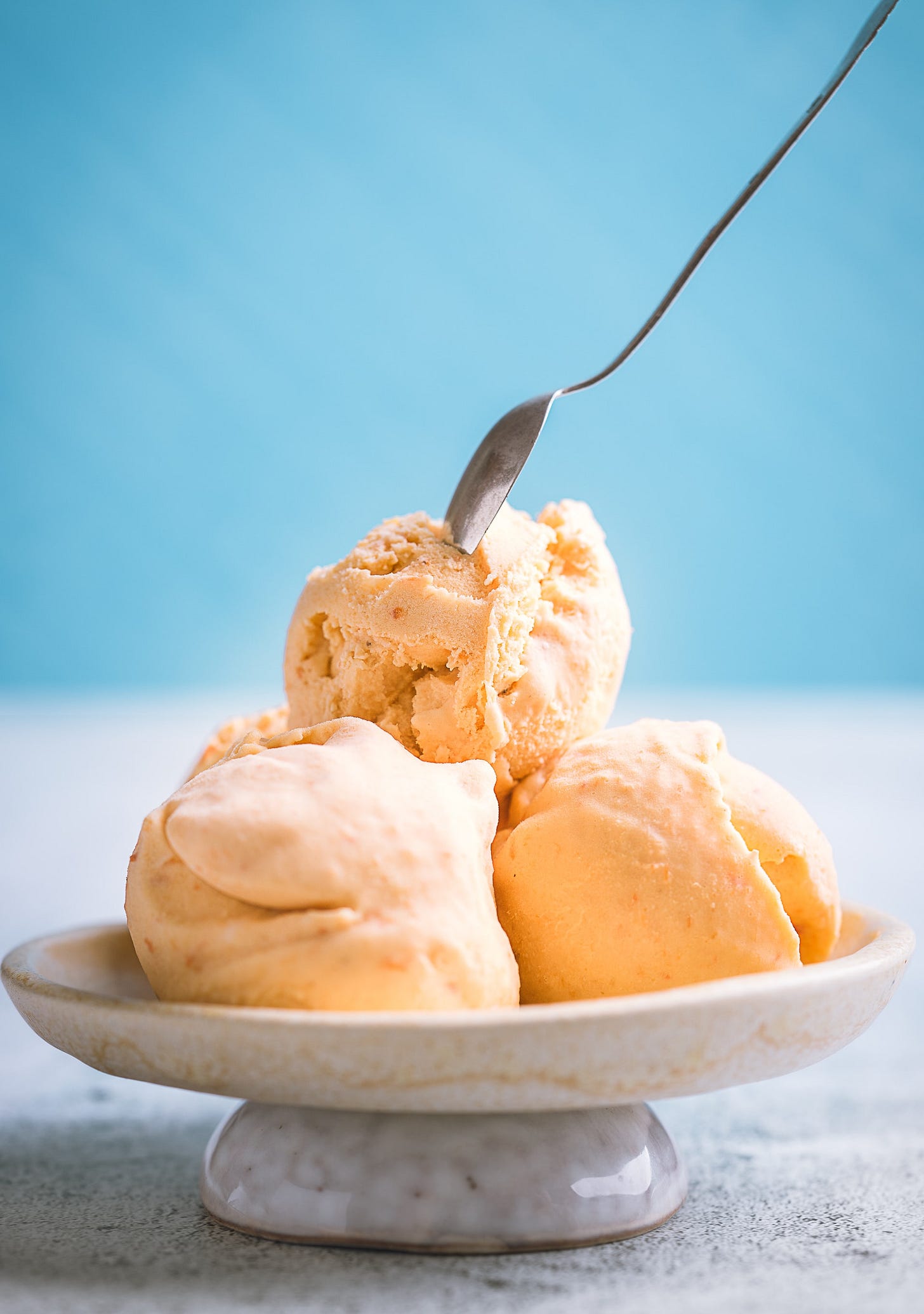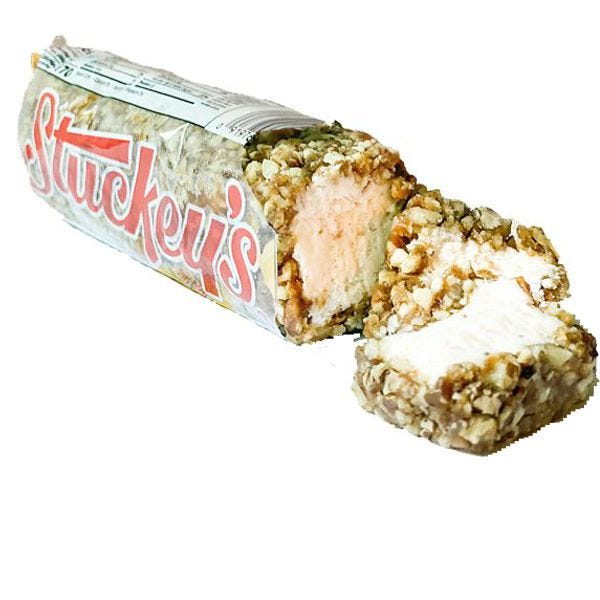Welcome to Thursday Things! If you enjoy this edition, please click the heart icon in the header or at the end of the post to let me know. You can post a comment by clicking the dialog bubble.
“Domo arigato, Mr. Gelato.” Photo by Erwan Hesry on Unsplash
Our science fiction future. Although we still don’t have viable flying cars or robot butlers — which would be the clearest markers that the future we were promised has finally arrived — we are living in the future that would amaze prior generations, and even our own younger selves.
And the hits keep coming, sometimes faster than we can keep up with or process: Supersonic passenger jets are coming back. AI-generated art is pretty amazing. We’re going back to the moon, and even Mars. We’ll soon have internet from the sky almost anywhere. I’m still blown away by how good a job Google Translate does.
And also by those faucets in bathroom sinks that come on when you put your hands under them.
It sometimes seems we wake up every day to a new technology or invention or trend that we would not have imagined yesterday. The future can be quite shocking.1
But here’s the thing — every new invention and technology we learn about was in fact imagined by someone. Imagined, designed, developed, and ultimately released into the world. And where do those designers and engineers and researchers get their ideas?
Sometimes from pure spontaneous inspiration, I’m sure. Sometimes from serendipity or an unexpected juxtaposition of events. Maybe from dreams. Perhaps from seeing unexamined connections in the existing body of scientific knowledge and asking what comes next?
And sometimes from reading science fiction. Or watching it on TV.
Are not our 21st century mobile phones the portable communicators of the original Star Trek series made real? We don’t have phasers or transporters or warp drives yet — and may never — but scientists are working on some version of all those things. Universal translator? We’ve got an early version of that. Tricorder? I was never sure what a tricorder did, but we’ve probably got the 1.0 version of that too.
Many scientists and engineers involved with the space program and other areas credit Star Trek for inspiring their careers, at least in part. Science fiction at its best evokes a sense of wonder and possibility.
Science fiction writers aren’t exactly in the business of predicting the future — their first job is to tell a good story. But often they do that by extrapolating from current trends and current research and asking “What if?”
What if this new thing actually works? Quantum computing, nanobots, AI, replacement organs, colonizing Mars, whatever. What if this technology is viable? What if things go on in the direction they seem to be? What happens? What are the implications? How will it affect society and the way we live our lives? And can I get a story out of that?
We are without question living in a future that was in part mapped out, inspired, and perhaps even foretold by the science fiction writers of the past. Just look up the track record of Jules Verne and H.G. Wells.
It follows then, that we might look to the speculative stories of more current SF writers to get a fair idea of our possible future looking ahead from 2022.
One person who did this back in 2015 is a guy with the awesome name Tiago Forte:
What I Learned About the Future by Reading 100 Science Fiction Books
Over the past two years I’ve read 100 sci-fi novels, averaging about one per week. See the full list here, with my favorites.
I started reading sci-fi to pass the time. I had good memories of reading Jurassic Park as a kid. I continued because I noticed that it gave me something: a stronger imagination, a disrespect for the merely possible.
I started noticing I had different ideas, ideas you can’t find by reading the same TechCrunch articles, Medium posts, and Hacker News digests as everyone else in Silicon Valley. I am in the business of selling ideas, and found these books both a treasure trove and a toolkit.
As futurist Jason Silva says, “Imagination allows us to conceive of delightful future possibilities, pick the most amazing one, and pull the present forward to meet it.” I believe reading these books has helped me both in the conceiving and the pulling.
That’s his intro. Here’s his “what if?” moment:
What if these books represented a fair guess at what the future will be like?
It’s not so far-fetched. Reading the early classics by Jules Verne and H.G. Wells, what strikes me is not how much they got wrong, but how much they got right. I drew my selections mostly from this list of the top 100 sci-fi works of all time, so these books represent what we consider the best (or at least the most interesting) ideas out there.
Here is the future we are headed for, as predicted by our greatest sci-fi writers.
Forte goes on in that blog post and a follow-up Part 2 to share ideas about the future that he gleaned from reading 100 science fiction novels. Obviously, I’m not going to repeat them all here — go read Forte’s article!
But I’ll give your some of his headlines as a teaser.
In order to save humanity, we must lose it
Time will be our greatest enemy
Collective consciousness is both our greatest hope, and our greatest fear
There is much food for thought in his list. If you’re at all curious about the shape of things to come and don’t have time to read 100 science fiction novels to figure it out, then check out Tiago Forte’s post!
And I’ll see you in the future.
Dear scientists - please stop. This all assumes we have a future, of course.
You might think that the global pandemic of the last couple of years, which took millions of lives and led to immeasurable disruption in countries around the world, would lead scientists to think twice before messing around with deadly viruses again.
You would be wrong.
Scientists Have Re-Created The Deadly 1918 Flu Virus. Why?
That is an excellent question, headline writer. Why would they do that?
In the latest news, a team of scientists in Canada and the U.S. report that they have re-created the 1918 influenza virus and used it to infect macaques. Let’s be clear here: the 1918 flu vanished from the Earth, long ago. It’s simply not a threat, or it least it wasn’t, until someone figured out a way to bring it back.
Why would anyone do this? I’ll get to that, but first a little background.
The 1918 flu pandemic was the worst plague since the Black Death, which occured in the mid-14th century. During World War I, a new flu virus swept the planet, killing upwards of 50 million people. It probably infected a third of the entire world population at the time.
Yes, the 1918 flu pandemic was horrible. Who looks at that and says, “Hey, let’s recreate the extinct virus that killed 50 million people or more!”?
Well, this guy: “Yoshihiro Kawaoka at the University of Tokyo and the University of Wisconsin described, in a paper in Nature, how he and his colleagues used the sequence to create live, infectious 1918 flu viruses. To test them on more human-like subjects, they infected 7 macaques with them. Not surprisingly, the macaques got severely ill, and the scientists eventually euthanized all of them.”
And these folks: “In the new paper, a team of researchers at the Public Health Agency of Canada, the University of Manitoba, and Oregon Health & Science University re-created the 1918 flu virus again, and infected 15 macaques.”
So why? “Why do they do it? All of the papers give essentially the same reason: these experiments, they say, will help us develop animal models in which we can test vaccines. These same justifications have been used for decades, but flu vaccines haven’t improved one whit, as far as I can tell.”
We have fun here at Thursday Things with various apocalyptic menaces, some more far-fetched than others: Killer pigs! Super-intelligent apes! Japanese fox demons! Ancient lifeforms emerging from hidden Antarctic lakes! Spider zombie necrobots! And more. All in good fun, and really just to get you to read about interesting or weird science.
But this really isn’t funny. The naturally occurring viruses out there are bad enough. Do we really need scientists making them worse? Or bringing back viruses that have already had a go at humanity?
No. No, we do not.
Ice cream for the win. Fortunately, not all scientists are insane and trying to create doomsday scenarios that will wipe out humanity. Some researchers are doing important work to improve our lives. Like demonstrating scientifically that ice cream is better for you than granola:
Ice cream is better for you than granola: surprising snack study
Researchers spent three years investigating over 8,000 different types of food and drink, examining 54 different attributes and using “cutting edge science” to rank them — giving them a score between 0 and 100, with 100 being the most healthy.
Unsurprisingly, whole foods like fruits and vegetables ranked highly on the list — with spinach scoring a perfect 100 — whereas processed foods and fast foods like burgers with all the condiments are lower.
Spinach? I was told there would be ice cream!
Fans of sweet treats will be thrilled to learn that chocolate ice cream with nuts scored 35 points while a coconut and chocolate granola bar received just 15 points. However frozen yogurt, a treat touted as the healthy alternative to ice cream, only scored 23.
Ice cream beats granola!
Professor Dariush Mozaffarian told the Daily Mail the reason the granola bar ranks lower than ice cream is that it’s made of “mostly refined starch and sugar” while its dairy competitor contains protein and nutrients.
Protein and nutrients — that’s what I’m talking about.
To be clear, this is only a relative victory, a battle at the bottom of the health rankings. Spinach and other veggies still rule in absolute healthfulness. But we’ll take ice cream when we can get it!
The NY Post, as they often do, copied the UK-based Daily Mail’s homework on this. So check out a more detailed article there for more about the Food Compass and how it can, perhaps, help you eat better: Food study that turns our understanding of snacking on its head: Chocolate ICE CREAM is more nutritious than a granola bar, bacon is better than couscous and McDonald's pancakes are healthier than an omelette
Or go straight to the source of the study at Tufts Now: Eat Healthier With the Help of a New Food Scoring System
“Eat it, granola! I win!” Photo by Dovile Ramoskaite on Unsplash
Stuckey’s Stop: Speaking of snacks, we featured the famous roadside stop Stuckey’s way back in a 2019 edition of Thursday Things. Maybe it’s time to check in again. Stuckey’s, once a mainstay of road trips, slid into relative decline for a variety of reasons, but is now making a comeback under the family-owned company’s energetic CEO Stephanie Stuckey, who was recently interviewed on the Today show:
Take a trip down memory lane at Stuckey’s roadside shop
Decades ago, a popular roadside shop called Stuckey’s was a must-stop for families just passing by. NBC’s Harry Smith reports in this week’s Sunday Spotlight on the effort underway to get Stuckey’s back to what it once was.
It’s a fun segment, in which Stephanie and correspondent Smith take a road trip in Mississippi and, of course, stop at a Stuckey’s location to get pecan log rolls and tacky souvenirs.
No word on whether pecan log rolls are better for you than ice cream, but why not have both, just to be on the safe side?
Pictured here, a delicious Stuckey’s Pecan Log Roll. Source: Stuckey’s
Thank you for reading Thursday Things! Again, please click the hearts, leave a comment, and use the share feature to send this issue to a friend who might enjoy it. See you next Thursday!
Which reminds me. In January 2020, I noted that it was the 50th anniversary of Alvin and Heidi Toffler’s bestselling book Future Shock and decided I would reread it along with the follow up titles The Third Wave (1980) and Powershift (1990). Obviously, 2020 did not go as planned. But I will put those back on my to read list.






